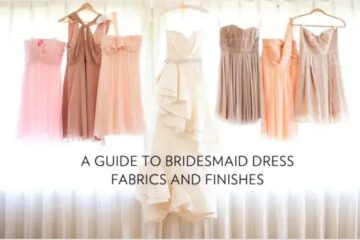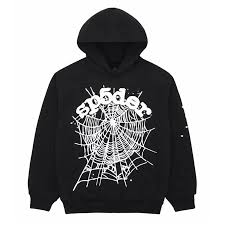Introduction
If you’re looking to enhance your hairstyle by adding volume, length, or coverage, you’ve likely come across two popular options: hair extensions and hair toppers. Both can transform your look, but they serve different purposes and are suited for different hair needs. Whether you’re dealing with thinning hair, hair loss, or just want to change up your style, understanding the differences between hair extensions and hair toppers will help you make an informed decision. This article will compare the two, looking at their benefits, application methods, and who they’re best suited for.
What Are Hair Extensions?
Hair extensions are wefts of hair that are added to your natural hair to increase length, volume, or both. They can be made from synthetic or human hair and are available in various methods, including clip-ins, tape-ins, sew-ins, fusion, and micro-link extensions. Extensions are ideal for those who want to enhance their hair but don’t necessarily need to cover thinning or bald spots.
What Are Hair Toppers?
Hair toppers, on the other hand, are designed to cover thinning or balding areas, particularly on the top of the head. They are smaller, partial wigs that blend with your natural hair to add coverage where you need it most. Toppers come in different sizes, base materials, and attachment methods, including clip-ins, bonded, halo, and integration toppers.
Comparing the Benefits
Both hair extensions and hair toppers offer unique benefits, but they cater to different hair concerns and goals.
- Hair Extensions:
- Length: Extensions are perfect if you want to add length to your hair instantly. Whether you have short hair or simply want longer locks, extensions can help you achieve your desired length.
- Volume: Extensions can also add volume, making your hair look fuller and more voluminous. This is particularly beneficial for those with fine or thinning hair.
- Versatility: With extensions, you can experiment with different hairstyles, including updos, braids, and more. They’re also available in various colors, allowing you to add highlights or lowlights without dyeing your natural hair.
- Hair Toppers:
- Coverage: Toppers are specifically designed to cover thinning or balding areas, making them ideal for those experiencing hair loss. They provide coverage at the crown and top of the head, where extensions typically cannot.
- Natural Look: Toppers blend seamlessly with your natural hair, especially when matched correctly in terms of color, texture, and density. They can give you a fuller head of hair without the need for a full wig.
- Non-Surgical Solution: For those dealing with hair loss, toppers offer a non-surgical, non-invasive solution that’s easy to apply and remove as needed.
Application Methods:
The application process differs between hair extensions and hair toppers, and it’s important to choose the method that best suits your lifestyle and hair type.
- Hair Extensions:
- Clip-In Extensions: These are the easiest to apply and remove, making them ideal for those who want a temporary change. They can be put in at home and removed daily.
- Tape-In Extensions: These are semi-permanent and require a stylist for application. They last several weeks and offer a more natural look than clip-ins.
- Sew-In Extensions: Also known as weaves, these are more permanent and involve sewing the extensions into braids. They’re great for thicker hair and can last several months.
- Fusion and Micro-Link Extensions: These involve bonding or attaching individual strands to your natural hair, offering a long-lasting and natural result, but they require professional application and maintenance.
- Hair Toppers:
- Clip-In Toppers: Similar to clip-in extensions, these are easy to apply and remove, making them convenient for daily use. They’re attached with small clips that secure the topper to your natural hair.
- Bonded Toppers: These are attached using adhesive or bonding glue for a more secure and long-lasting fit. They require professional application and can last several weeks.
- Halo Toppers: These sit on your head, secured by an invisible wire or band, and blend with your natural hair. They’re gentle on your hair and easy to apply but may not feel as secure as other methods.
- Integration Toppers: These have a netted base that allows your natural hair to be pulled through, integrating with the topper. They offer a seamless blend and are ideal for more advanced hair loss.
Who Should Use Hair Extensions?
Hair extensions are best for individuals who:
- Want to Add Length: If your primary goal is to make your hair longer, extensions are the way to go. They can instantly transform short or medium-length hair into long, flowing locks.
- Desire More Volume: Extensions can thicken your hair, making it appear fuller and more voluminous.
- Like to Experiment with Hairstyles: If you enjoy changing your hairstyle frequently, extensions offer the versatility to do so without permanently altering your natural hair.
- Don’t Have Significant Hair Loss: Extensions work best when you already have a solid base of natural hair to attach them to. They’re not ideal for covering large areas of thinning or balding.
Who Should Use Hair Toppers?
Hair toppers are best for individuals who:
- Are Experiencing Hair Loss: If you have thinning hair or bald spots, especially on the crown or top of your head, toppers can provide the coverage you need.
- Need a Non-Surgical Solution: Toppers offer a simple, non-invasive way to address hair loss without the need for surgery or medications.
- Want a Natural-Looking Solution: Toppers blend with your natural hair, providing a fuller, more natural look than a full wig might offer.
- Prefer a Comfortable, Lightweight Option: Toppers are smaller and lighter than full wigs, making them more comfortable to wear daily.
Maintenance and Care
Both hair extensions and hair toppers require proper maintenance to keep them looking their best.
- Hair Extensions:
- Washing: Use a sulfate-free shampoo and conditioner to clean your extensions. Be gentle to avoid tangling or loosening the bonds.
- Brushing: Use a wide-tooth comb or extension brush, starting from the ends and working your way up.
- Styling: Avoid excessive heat, and always use a heat protectant spray when styling with hot tools.
- Sleeping: Tie your hair in a loose braid or ponytail before bed to prevent tangling.
- Hair Toppers:
- Washing: Wash your topper with a gentle, sulfate-free shampoo. Avoid over-washing to prevent drying out the hair.
- Brushing: Use a wide-tooth comb to detangle the topper, starting from the ends.
- Styling: For human hair toppers, you can style them like your natural hair. For synthetic toppers, follow the manufacturer’s guidelines.
- Storage: Store your topper on a wig stand or in its original packaging to maintain its shape.
Conclusion
Choosing between hair extensions and hair toppers depends on your specific hair needs and goals. If you’re looking to add length and volume to your existing hair, extensions are likely the best choice. However, if you’re dealing with thinning hair or bald spots, a hair topper will provide the coverage and confidence you need. By understanding the benefits, application methods, and maintenance requirements of each, you can make an informed decision that best suits your lifestyle and enhances your natural beauty. Whether you opt for extensions, a topper, or both, these tools can help you achieve the hair of your dreams.
Keep an eye for more news & updates on Gossips!




